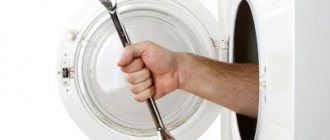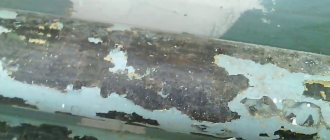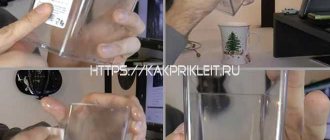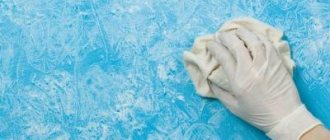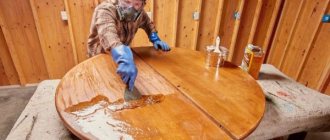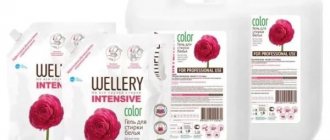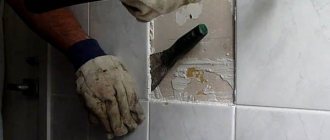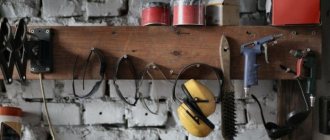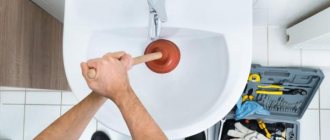You can remove the sticky layer from gel polish with a cleaner, degreaser, or products that combine both of these functions. In their absence, ethyl alcohol, 70-90% medical solutions, and vodka are suitable. Do not use acetone-containing liquids; they will cause the coating to become dull, fade and weaken.
Stickiness is always removed from the base, gel polish and top coat; it prevents you from applying the next product evenly and attracts debris. Nano Professional, Solomeya, Domix, De Lakrua, Mozart House, Sophin have better liquids for this. And the highest quality bases with a sticky layer are UNO, ONIQ, Klio, Diva, One Nail.
How to remove the sticky layer from gel polish: basic tools
You can remove the sticky layer from gel polish using the following means:
- Klinser. This liquid exists to remove dispersion after the flower bed, top or base has dried. It consists of isopropyl alcohol, ethyl acetate, fragrance, and can also be used for gel extensions. Bottles of products usually do not have a dispenser. You need to wet a lint-free cloth with the liquid and wipe the surface.
- Degreaser. This product is intended for wiping nails after a manicure. It removes excess moisture, grease, and dust from them, which promotes strong adhesion to the base. In addition to alcohol or its substitute, the composition also contains caring components. Use a degreaser in the same way as a cleaner. But still, it is more suitable for removing particles of organic origin rather than the inhibited layer.
Manufacturers of liquids for manicure have 2-in-1 products. This is written on the bottles, and there is also information about the possibilities of use. It means that the product was created to degrease “living” nails and remove the dispersion layer from dried artificial coating.
How to remove correctly and when
To understand how to properly remove stickiness and when, you need to consider several points:
- The dispersion appears only after polymerization of the coating. That is, the base, flower bed, finish must first be dried in a lamp with a power of 36 W or more, and not try to immediately use a cleaner after application. If you do this, the coating will simply smear and be partially erased.
- After drying, you need to wait a couple of minutes for it to cool down. Then moisten the napkin generously with a clinser and carefully wipe each nail. If you do this “hot,” particles of the sticky layer may remain on the surface and prevent you from applying the next product evenly.
- The base also needs to be degreased, although there is a temptation to leave a sticky layer. It seems that it will hold the gel polish more firmly and will help you wear the coating longer without chipping. In fact, due to the stickiness, the flower bed will lie unevenly. This is not only unsightly, but will also contribute to the coating breaking in the future.
- The sticky layer should be removed from shellac at the same time as from gel polish or gel. The coating is applied, dried, wait a couple of minutes and wipe the nails with a clinser. From the base for shellac and finish, if they have residual dispersion, this is also removed.
- It is imperative to remove the sticky layer from a matte topcoat when there is no No Cleanse or No sticky designation on the bottle. Only in this case will it acquire its true appearance, having lost its gloss. Without wiping with a cleaner, the coating will look shiny and collect all the specks.
The process itself looks and is simple:
- A base with a sticky layer is applied to prepared nails.
- Dry the coating in a lamp.
- Wait a couple of minutes without touching anything with your nails.
- Moisten a lint-free cloth with a cleanser.
- Wipe each nail, adding product if necessary.
- Allow the nails to air dry a little.
- Gel polish is applied and polymerized.
- Once again, wait a couple of minutes for the coating to cool.
- Wipe it with a fresh napkin moistened with cleanser.
- Wait for the product to evaporate from the nail surfaces.
- Repeat steps 7-10.
- The finishing agent is applied and polymerized in a lamp.
- Let it cool down.
- Wipe the surfaces of the nails with a clinser, and the manicure is ready.
How to remove from stencil
You can remove the sticky layer from a stencil or sticker in the same way as from a coating, because the decor is fixed with a finish. And you will have to remove the dispersion from it. That is, there is no need to be particularly careful. Everything is done in the usual way.
If the stickiness needs to be removed from the inside of the stencil, place it on a flat surface and hold it with tweezers. The napkin is moistened with a clinser and pressed against the decor for a few seconds. Then move it in one direction until the stickiness disappears.
What to do if the sticky layer comes off with the varnish?
Often, after polymerization and removal of the dispersion layer, the gel varnish itself goes along with the napkin. What is the problem and how to avoid this unpleasant phenomenon? Think about it, you may be making the following mistakes:
- Do not dry the varnish completely. Check the timer on the lamp and adjust the drying time depending on the manufacturer's requirements;
- replace the lamps. There is a possibility that it is your lamp that is faulty, then you just need to change the light source to a more advanced and new one;
- Perhaps this defect is caused by poor-quality liquid. Check its composition for the presence of acetone. If its percentage is exceeded, either do not use this bottle, or try diluting it with water;
- if there is more pigment in a color gel than necessary, then with a considerable degree of probability it will not polymerize well;
- Pressing the plate too hard while removing the dispersed layer can also cause imperfections. Your movements should be progressive and soft.
Almost certainly, when “holes” form in the coating, one of the above reasons is to blame. Analyze the information and correct your mistake.
The best liquid for removing the sticky layer
When choosing a liquid to remove the sticky layer, there are several brands worth looking at:
- Nano Professional Cleaner. The product is used for natural nails, that is, you can degrease them, and as a cleanser. It has a pleasant, mild smell, removes the sticky layer well and does not harm the skin if it gets on it. It evaporates quickly, which means it will be useful for beginning craftsmen who are still working slowly. Cost – 200 rub. for 200 ml.
- Solomeya Profesional Cleancer 2 in 1. The liquid copes well with grease and moisture, completely removes the sticky layer without removing the shine. It also does not affect the color of the gel polish. This clinser contains caring components that do not interfere with the strong connection of the artificial material with the nails. The pump of the bottle makes it especially convenient to use. Price – 250 rub. for 100 ml.
- Domix Nail Prep Lux 2 in 1. Does not contain solvents, is gentle on nails, but efficiently removes all excess from them. It has a pleasant unobtrusive aroma. Sold in bottles of 200, 255, 500 and 1000 ml. There are formats with pump. The cost of a container with a maximum volume is 560 rubles.
- De Lacroix Professional Cleaner. The product consists of different types of alcohol and water. Therefore, it dehydrates nail plates and removes stickiness equally well. The color of the gel polish and the shine of the coating are preserved. It has a fairly noticeable smell, but it dissipates quickly. The price of the liquid is 1000 rubles. for 1 l. There are also smaller bottles for home use.
- De Lakrua Cleaner-sanitizer. The product is used for natural nails and all types of coating. It not only removes the dispersion layer, but also helps gel polish, acrylic, silk, and extension gel adhere more securely. It has a neutral smell. The bottle has a convenient dispenser with a narrow spout. The cost of a bottle of 80 ml is 110 rubles.
- Mozart House Gel Cleanser. This is also a multifunctional tool. It has a pleasant smell and high quality. Copes with moisture, grease, dispersion layer, but does not make the flower garden cloudy. The finish also maintains shine and density. The composition contains no solvents. The price of the liquid is 290 rubles. for 150 ml. But it is spent very economically.
- Sophin. The product, based on isopropyl alcohol, has a pleasant smell and instantly dissolves the sticky layer, preserving the color of the gel polish. Manufacturers claim that the liquid gives nails extra shine. Its cost is from 350 rubles. per 100 ml bottle.
- Grattol 3 in 1. The product is used not only for degreasing nails and removing residual stickiness. It can be used to wet the brush when working with acrylics. Cleanser contributes to the strength of the coating. Its price is 330 rubles. for 150 ml.
- Kinetics Di-Tac. The liquid has a pleasant peach smell, without a trace, and quickly removes residual stickiness after polymerization. It is also used for washing brushes after polygel and acrylic. The cost of a 225 ml bottle is 1200 rubles.
You should choose a cleaning liquid keeping in mind that it may cause allergies. It is the cleanser or degreaser, and not other materials, that often leads to swelling of the fingers, itching and sores on the skin, and the inability to wear gel polish. And if the product is changed to a new one, the problem disappears and manicure can be done again.
How to use cleansers?
A product intended for subsequent removal of the sticky layer is called a clinser. Its composition is so simple that you can make a clinser at home: the clinser contains water, alcohol and a certain amount of fragrance. Typically, this product is used not only to remove the dispersion layer, but also to eliminate the unpleasant, oily shine on the nails after the procedure. After removing this layer, the gel manicure remains on the nails much longer than usual.
Interestingly, if you use the clinser together with regular varnish and apply it to the nail before decorating the plate, the colored coating will last the girls for a long time.
To achieve the greatest effect, you need to use only a clinser that was produced by the same manufacturing company as shellac gel polish: this helps preserve the natural color of the varnish without compromising its structure and integrity. Otherwise, the coating may fade or even delaminate, and along with it, the condition of the healthy coating will deteriorate. Cleansers from Clarify, De Lacrua, Severina, CND, etc. are especially popular among the female population. Many people like to use the Inglot Brush Cleanser, which perfectly degreases nails and does not leave a single trace of a sticky layer.
Manicurists and pedicurists usually recommend using products only from brands that have already proven themselves well in the sales market: despite the high price, their quality has already been proven by many buyers. In addition, such clinsers guarantee excellent health of the nail plate and complete preservation of the manicure or pedicure.
Klinser can also be made at home: you just need to thoroughly mix water and alcohol in proportions of 70% to 30%. After this, it is advisable to let the liquid brew overnight.
Do you always need to remove the sticky layer from the base?
The sticky layer from the base should always be removed for several reasons:
- It makes it difficult to apply the flower bed evenly. The brush clings to the surface and gets stuck in one place. The gel polish clumps up in some areas, while in others it is impossible to paint over the nail with it. All this leads to uneven coverage.
It’s impossible to get the perfect highlight or control the thickness of the material. And this leads not only to detachment, but also to deformation of the nail plates, increasing the likelihood of breakage. For the same reasons, you need to remove the sticky layer before applying topcoat. This is the final part of the coating. The problems with a finish applied to a sticky layer will be the same, only they will be even more noticeable.
- It may cause material conflict. Often they use the base of one company, the flower bed from another manufacturer, and the finish from a third. The dispersion layer between them is an extra “gasket”. If the polymerized surfaces are neutral in relation to each other, then stickiness can cause rejection. And the coating will quickly fall off entirely or begin to peel off in pieces.
- It will prevent some types of decor from being fixed well. It is a myth that stickiness helps stickers and sliders stick. After all, after applying to the nail, they need to be smoothed with an orange stick so that there are no air gaps between the film and the base. Otherwise, the coating will not last long, because emptiness is a detachment.
And if the slider or foil tape were placed poorly, smoothing them out on a sticky surface will be problematic. The first is a thin film. And it will simply tear, after which everything will have to be redone. The same problem will occur with foil strips.
- It will attract all the debris, invisible specks of dust, etc. Sometimes nails are covered only with a base, for example, camouflage or to level, shine, and give them thickness. The flower bed is not used, but a finishing agent is required. But it won’t be possible to apply it beautifully and efficiently to the sticky surface of the base.
Watch the video about what the sticky layer is for:
The sticky or dispersive layer of gel polish is what remains on the coating after polymerization. It can be easily detected by touching the surface of the painted nail with the pad of your finger. The leather will stick slightly and you can see the imprint on the coating. The sticky layer has no special purpose. It’s just that the composition of gel polishes and some bases and tops is such that, as a result of exposure to ultraviolet radiation, they harden, and an adhesive substance appears on top.
You can leave it only if you use transfer foil. The decor will be more clearly imprinted on the nail plate if its surface is sticky. But high-quality foil also adheres well to a smooth nail after removing the dispersion layer. To secure rhinestones and elements made of gel plasticine, the latter does not play any role; such stickiness is not enough. Volumetric decor must be planted on a damp base or special glue.
What is the sticky layer and why does it remain?
When performing a manicure at home, enterprising young ladies take into account many points: the quality of the coating itself and accompanying decorative materials, sharpening the working edges of scissors or tweezers, as well as the optimal abrasiveness of the nail file. All this is under the sensitive attention of the craftswoman. The one thing that is often overlooked is removing the sticky layer. No, no, we are not talking about the standard removal of stickiness from the finishing top, but about the dispersion layer of the classic gel.
In order to answer the question asked 100% correctly, it is important to understand what exactly the mixture contained in the shellac bottle consists of. In fact, contrary to popular belief, the entire periodic table is not hidden behind transparent glass walls. Most often, the following ingredients can be seen in the formula:
| Formula Component | Its purpose |
| Plasticizers | Particles of a substance that gives the polymerized gel elasticity and plasticity. Plasticizers are especially important at the moment when there is a mechanical effect on the nail plate. It is the quality of the plasticizer raw material that determines whether the coating will be chipped or not. |
| Polymers | Another mandatory item in the list of ingredients of any gel polish. Polymers are designed to improve durability and increase the degree of adhesive adhesion of natural nail keratin to artificial coating. It is logical that in expensive varnishes the plasticizers are also of higher quality, while in budget ones they are cheaper |
| Solvents | It is a mistake to believe that polymerization is an ordinary process of hardening varnish under a UF or LED lamp. In fact, polymerization is the process of evaporation of solvents from the surface of the coating, due to which it hardens |
| Silicates | An auxiliary ingredient that should also be included in any varnish. Silicates control the degree of pigment settling and prevent the varnish from delaminating; they are also responsible for the overall viscosity of the consistency |
| Titanium dioxide | Another “chemical” ingredient. Essentially, this is a snow-white pigment that is added to almost every gel polish to emphasize the intensity of the original shade. |
| TSF | Perhaps the most “controversial” component of varnish. It is designed to improve the degree of adhesion of the coating and the nail plate, which directly affects the durability of the manicure. But such an additive is safe only in the absence of formaldehyde. Read the ingredients carefully |
| Mica | The component thanks to which we observe a delicate pearl shimmer. Essentially, mica is an accumulation of finely dispersed reflective particles that block direct sunlight or artificial rays |
| Camphor | The same plasticizer, but of natural origin. At the moment, camphor is being removed from use, as it is a powerful allergen. |
This, perhaps, is the entire “base” on the basis of which shellac or gel polish is then formed. Naturally, each of the presented components directly affects the quality of the coating itself, its intensity and durability, but part of the responsibility for this also lies with the master who processes the nail plates. So what is this sticky layer of shellac? Essentially, polymerization is the process of turning a measure into a viscous but liquid consistency, which gradually hardens under UF or LED lighting by evaporating solvents. As a result of this metamorphosis, a sticky layer called a dispersion layer is formed on the hard surface. It is needed for adhesion of materials of different nature. In the case of gel manicure, to increase the adhesive ability of the artificial gel and natural keratin contained in the nails.
In other words, dispersion is a by-product of drying the gel coating, necessary for better bonding of all layers of the gel and the natural nail. And answering the question: “Do I need to remove the sticky layer from the base?” – the answer is clear – “No!” A sticky layer is simply necessary so that all layers of the manicure - base, color and top - adhere well to each other. When removing the dispersion, both from the base and from the color layers, the manicure loses its strength; it chips and peels off from the nail faster.
Base with a sticky layer: what is it, the best types
A base with a sticky layer is one of the types of this category of products, because there are also No Cleanse or No sticky, which do not need to be wiped with a cleanser after drying. But this is not their main difference. And the fact is that bases with a sticky layer, due to their composition, are thicker, more elastic, smooth out the nails well and last longer. They can be camouflage or transparent, rubber. The products have a liquid texture without residual stickiness. And they are more suitable for strong nails that do not need additional strengthening, and on which manicure wears well.
Among the bases with a sticky layer, the best from manufacturers are:
- Uno,
- Klio,
- Diva,
- One Nail,
- ONIQ
Each company has hard and elastic products, but they all stick well to the nails.
How to use
Using a product with a sticky layer is easy:
- It is applied to the prepared nail in 3 movements - in the center and along the side ridges.
- Take a drop of base and place the brush at a distance of approximately 4 mm from the cuticle.
- Stretch this amount to the free edge without touching the nail with the bristles.
- The finger is turned upside down for a more even distribution of the product, and imperfections are corrected with a brush.
- The hand is returned to its previous position and the base is leveled again with a brush, if necessary.
- The finger is placed under a drying lamp.
- After 1-1.5 minutes, wipe the nail with a napkin moistened with a clinser.
- When the moisture dries after a few seconds, you can apply gel polish with a sticky layer - first with a long stroke in the center, from the cuticle to the end.
- The following actions with a brush with a flower bed are performed on the sides of the nail.
- The area under the cuticle is painted with a thin brush.
- The finger is placed in the lamp for polymerization.
- After cooling for a minute, wipe the nail with a cloth moistened with a cleanser.
- When the liquid has evaporated, apply a second layer of gel polish in the same way as in steps 8-10.
- Once dry, repeat steps 12-13 and the finishing agent can be applied.
When to shoot
Many beginners will immediately ask: then why remove the sticky layer if it is so useful. The answer is quite simple, but first you need to understand when you can take it off.
Important! The sticky layer is removed only from the protective topcoat. That is, this action will be the final one when creating a manicure.
Immediately after you have dried the finishing agent in a UV or LED lamp, you can safely remove the sticky layer. For this procedure, it is better to use clean, lint-free wipes that are well moistened with a special liquid.
Removing the sticky layer
It is worth removing the sticky layer from the gel polish base for several reasons:
- the manicure will not have a glossy shine;
- small lint, dust and other contaminants will begin to stick to the nail;
- violation of technology will lead to rapid destruction of the design;
- the visual appearance of the manicure will immediately change for the worse.
Sticky remover
Note! Removing the sticky layer from the topcoat is mandatory. Therefore, carefully treat each nail with a lint-free cloth, well moistened in a special cleaner.
How to replace a clinser to remove the sticky layer
The cleaner for removing the sticky layer can be replaced:
- ethyl alcohol;
- pharmaceutical means for performing injections, which also contain it;
- formic alcohol.
But you cannot use acetone and liquids that contain it. As well as removers for regular nail polish and gel polish.
Is it possible with alcohol, vodka
You can remove the sticky layer of base or gel polish with alcohol. After all, more than half of professional products consist of it. True, they use isopropyl alcohol, and ethanol is usually available at home. But the difference between them when performing a manicure does not matter. Any alcohol works well to remove residual stickiness. Some people advise diluting it with water in a 2:1 ratio so as not to dry the skin too much. You can buy an alcohol solution used for injection or formic alcohol at the pharmacy. To wipe the top, it is also better to dilute them with water so that the coating does not fade.
Vodka is also suitable as a clinser if you don’t have one on hand. But you need to take into account that it contains other components besides alcohol. They can disrupt the adhesion of the base, gel polish and top coat. Therefore, the coating will wear less than when using a professional liquid.
Is acetone suitable for home use?
You should not use acetone at home instead of a cleaner or degreaser. This product also copes well with the residual stickiness of gel polish or base. But it also:
- can change the shade of a flower garden;
- makes the camouflage base and topcoat cloudy;
- weakens the adhesion of layers.
Acetone can easily ruin your manicure, and it won't last long.
Nail polish remover with or without this component has the same disadvantages. In addition to acetone, it may contain oils and glycerin. The substances will interfere with the strong adhesion of the coating layers. It will begin to break off in pieces or entirely soon after the manicure is completed.
Alternative to clinser
Did you forget to buy a cleaner, or did you suddenly run out of it?
Don't give up on creating a beautiful manicure! You can cook it yourself. Just mix alcohol with water (3:7 ratio). With this composition you will remove the sticky coating, and the gel polish will not become cloudy. And it doesn’t matter what brand your varnish is. You can take ordinary liquid, which is used to remove simple varnishes from nails. Only it should not contain acetone - it can change the color of the varnish, make it more cloudy, or even remove part of the color along with the sticky coating. Dilute acetone is also not a good idea - the effect will be similar.
But the use of formic or boric alcohol is allowed. Although, of course, such components are not found in every home. The stickiness can be removed by ordinary high-quality vodka, while the color of your manicure will remain unchanged.
It is worth remembering that the manufacturers themselves insist on using proprietary formulations. And for good reason: any varnish can become cloudy and lose its attractive shine if you combine it with improvised means, instead of special cleaners. Remember that the quality of your coating will directly affect the preservation of the properties of your gel polish. If your gel polish is the cheapest, and the clinser is of high quality, then a color change can still occur. And it won’t be a matter of the clinser.
Originally posted 2018-03-29 09:18:42.
Source
Why does the shine disappear after removing the sticky layer?
Sometimes home craftsmen are surprised why the shine disappears after removing the sticky layer, but this is natural:
- If the coating is poorly dried. It may appear to be completely polymerized, but this is not always the case. An old and low-power lamp is not able to properly dry top coat or gel polish. This is manifested not only by the disappearance of gloss, but also by worse durability of the coating in the future. Incomplete polymerization is possible due to too thick layers of gel polish, base, or top coat.
- If the products used for manicure are of poor quality. Most often, this is the case with cheap gel polishes and top coats or counterfeits of well-known brands. They also have a sharper and more unpleasant odor and chip off the nails faster.
- If the cleaner is not suitable for a particular brand of gel polish or finish. Some of the auxiliary fluids are too aggressive and contain acetone. And along with the residual stickiness, the next microlayer of the coating is removed, giving it gloss.
- If you were in a hurry to remove the dispersion layer. Experienced craftsmen recommend taking a break for a couple of minutes after polymerizing the coating for a reason. It should cool down. This doesn't mean your nails will be hot all the time. But you need to wait precisely so that the gloss “settles” on the surface and cannot be removed.
- If a matte finish was mistakenly used instead of a shiny finish. Some products in this series remain shiny after polymerization. And only rubbing with a clinser gives them real texture.
- If you used one napkin at all stages. This saving leads to the fact that after wiping the dried base product, particles of the removed layer remain on it. After processing polymerized gel polish, the amount of debris increases. It turns out that nails with a finishing coat are wiped with a completely dirty napkin, and the sticky layer is simply smeared over their surfaces. Don't be surprised that the top becomes cloudy and loses its shine.
- If instead of a clinser you took a handy alcohol-containing product. Perhaps it is incompatible with a particular brand of top, which is why the coating fades.
You can avoid the problem if:
- paint your nails with high-quality materials;
- at least use a professional product for the finish and not a substitute;
- make sure the base, gel polish, top and cleanser are compatible;
- do not rush to get rid of the dispersion layer immediately after polymerization;
- use a different napkin for each nail and change it for a fresh one at all stages.
Why does a sticky layer appear?
Creating a unique pattern on your nails using gel polish is a popular way to create a beautiful and durable manicure in the style of the latest trends. You don't have to spend a lot of money or spend hours in a nail salon to do this. The simplest but most effective patterns are usually done independently at home, even by beginners without drawing experience. In this case, you need to follow the application technology, use specialized products and the necessary tools for this. The final stage of creating almost any manicure using the popular fashionable gel polish is removing the sticky layer. Women who do a beautiful manicure using gel coating themselves at home often doubt whether it is necessary to remove the sticky layer from the gel, when it needs to be removed, and why it is needed.
A sticky layer appears after the gel polish is polarized in an ultraviolet lamp. It is also applied to the main and final coating under gel polish. The sticky layer ensures better adhesion of each layer to the nail plate, as well as layers of gel polish to each other. This dispersion layer shines after drying under a lamp and has some stickiness to the touch.
This property of the coating can be useful for creating a unique manicure design. Rhinestones, foil, lace and other decorative elements are attached to it without the need to use special glue.
The sticky layer on the top coating should always be removed , unless otherwise required by the technology for applying a particular type of manicure. The dispersion layer, if not removed, can cause allergies. It has a strong, unpleasant odor and can negatively affect the condition of the skin around the nail plate. Therefore, aggressive chemicals in its composition should be neutralized. If the technology is followed correctly, the base coating will remain shiny and will not change its properties. And the necessary layer of final coating will remain to protect the manicure and extend its durability.
Many people are interested in the exact answer to the important professional question, from which other layers should the sticky layer be removed. Nail art experts explain that the primer is never degreased. This is the first layer, which creates the main adhesion of all subsequent layers to the nail. Stickiness is its main quality. The sticky layer is also not removed from the base layer and main layers of colored varnish.
However, some techniques require its removal:
- if coatings from different companies are used;
- before depicting patterns and decor to get clear contours without bleeding;
- if gel paint is used on one of the layers.
It is important to choose the optimal solution for removing the sticky layer. It’s good if you have the opportunity to purchase a professional product from the original manufacturer, the gel of which covers your nails. Only then can you be sure of a predictable and professionally ideal result.
The coating will retain its original characteristics. And you won’t have to spend extra time on corrections or creating a new manicure.
Source
Why can't you use cotton pads with a clinser?
To remove residual stickiness, it is necessary to have lint-free wipes. Cotton pads are not suitable because they leave fibers or smaller particles on surfaces. This means you can forget about an even coating with the right highlights. After all, it won’t work well to lay gel polish and top coat on the trash.
Cleanser is no less important part for performing a manicure than the tools and materials for coating. Therefore, you should choose it carefully, without saving, especially since the liquid is consumed little by little. A mandatory property for the composition is hypoallergenicity, which is tested before use on nails.
How is the sticky layer formed?
Gel polish is a plastic mixture with a colored pigment, which, under the influence of UV rays, quickly polymerizes and hardens. A thin dispersive sticky layer appears on the surface of the frozen design. This is exactly what we are talking about now.
High-quality nail coating
The main function of the sticky layer is to improve the quality of adhesion of different surfaces. Thus, it helps to hold together:
- base product with gel polish;
- different layers of gel varnishes among themselves;
- the last layer of varnish with a fixing top coat.
Note! After polymerization, the resulting sticky layer becomes an assistant for a high-quality manicure. Therefore, there is no need to remove it from gel polish under any circumstances.
Manicure with gel polish
